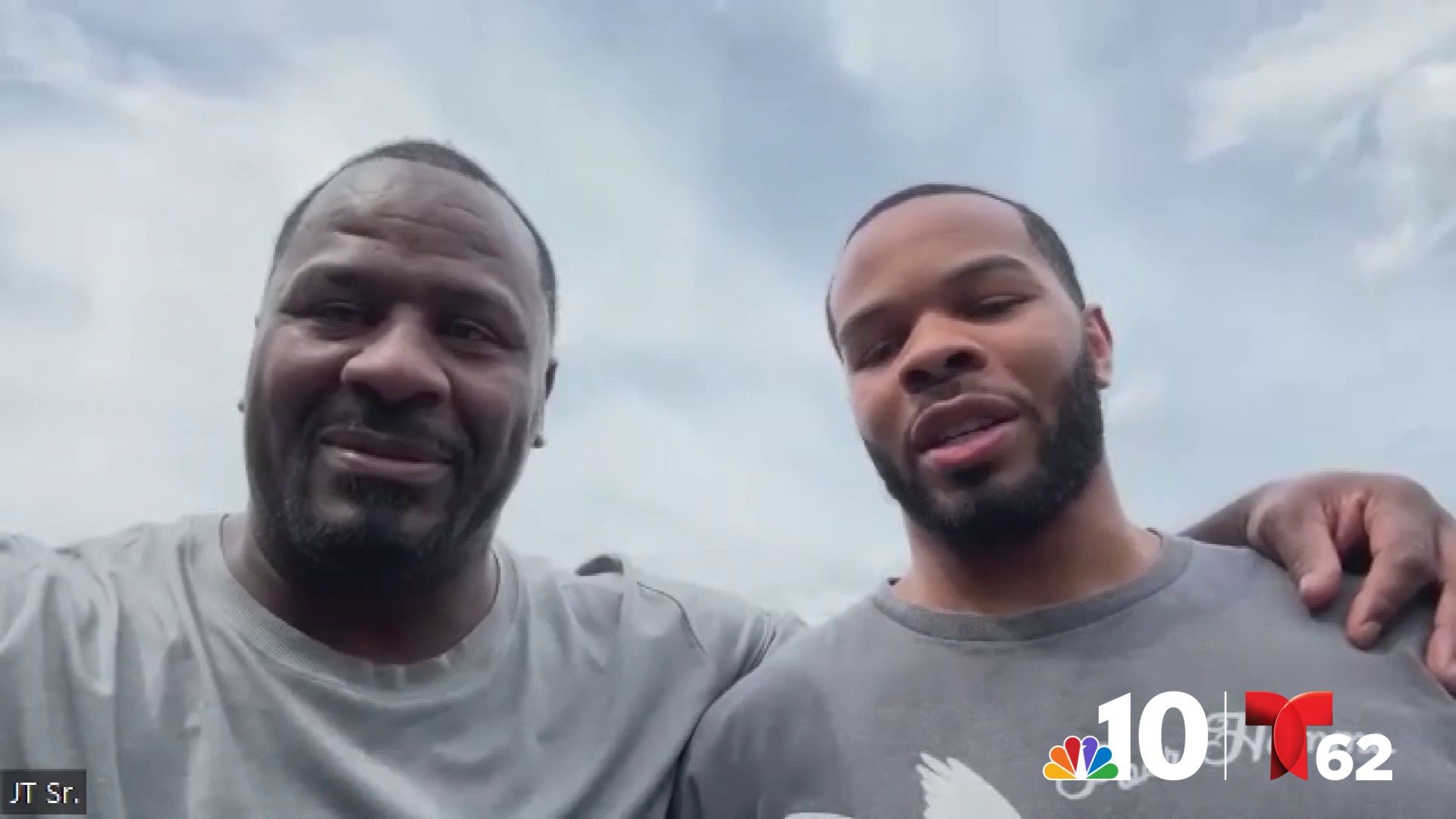
Culture, religion and language play a part in how immigrants think and speak about suicide, according to experts.
In the case of Latino immigrants in particular, suicide (or its ideation) may be stigmatized as a sin or as a sign of cowardice. It is rarely spoken about as a health concern.
[[427254163,300,600,L]]
"Many people think that suicide is a reaction to something bad that happens to a person, but actually it has well-defined biological basis,” said Dr. Maria Oquendo, president of the American Psychiatric Association, and professor and chairman of Psychiatry at the Perelman School of Medicine at the University of Pennsylvania.
While the primary suicide trigger remains unknown, Oquendo said, "we know that suicide has a genetic basis and runs in families."
"In those families where there have been suicides, the children have a higher susceptibility," she added. "It is the same as, for example, hypertension or diabetes. It is not one hundred percent certain that they will have the disease, but it does increase the probability."
Among the Latino population, Dr. Oquendo says, adolescents are the most vulnerable.
Local
Breaking news and the stories that matter to your neighborhood.
"We know that teenage girls have a certain vulnerability due to family conflicts — because of the cultural clash they experience. In some cases, they are required to behave in a more traditional way at home, and outside of the home it is very different. Like every teenager, [the Latina adolescent] wants to fit in."
Those who leave the home — whether because they marry at an early age, leave to study or simply seek a different way — they don’t necessarily escape suicide ideation, however, because they are sometimes abused, or exposed to abuse.
if("undefined"==typeof window.datawrapper)window.datawrapper={};window.datawrapper["qDuTZ"]={},window.datawrapper["qDuTZ"].embedDeltas={"100":676,"200":432,"300":371,"400":354,"500":337,"600":310,"700":293,"800":293,"900":293,"1000":293},window.datawrapper["qDuTZ"].iframe=document.getElementById("datawrapper-chart-qDuTZ"),window.datawrapper["qDuTZ"].iframe.style.height=window.datawrapper["qDuTZ"].embedDeltas[Math.min(1e3,Math.max(100*Math.floor(window.datawrapper["qDuTZ"].iframe.offsetWidth/100),100))]+"px",window.addEventListener("message",function(a){if("undefined"!=typeof a.data["datawrapper-height"])for(var b in a.data["datawrapper-height"])if("qDuTZ"==b)window.datawrapper["qDuTZ"].iframe.style.height=a.data["datawrapper-height"][b]+"px"});Waleska Maldonado of the Philadelphia Department of Human Services, who for many years worked as a social worker at the Latino community organization Congreso, says that many teenagers who seek help for suicide prevention are affected by drug addiction, domestic violence or a poor socio-economic status.
"Money is lacking in many homes," Maldonado said, "but the truth is, that if they understand where to look for help, things can improve."
"Many of the girls we worked with gained confidence and trust through therapy. And they themselves tell of their experiences because that is one of the ways in which the treatment works,” she said.
Maldonado is convinced that the mental health of immigrants, especially Latinos, can improve through open communication.
"It is on us — those of us in these posts, in the press and the victims themselves — to speak out and to create a kind of network, by word of mouth, so that when these little girls arrive in this country for the first time, they know what to do and where to go for help,” Maldonado said.
[[423861694, C]]
Organizations that offer mental health services, she said, need to not only inspire confidence in their patients but also help them maintain it.
"The Hispanic community in Philadelphia needs help and each case depends on the respective circumstances. We know that sometimes circumstances push people into suicide, but we also know that many people are willing to fight for a better outcome. Nevertheless, they sometimes don’t know or understand what they should do because of language barriers,” Maldonado said.
According to Erika Almirón, director of the Latino immigrant advocacy organization Juntos, the immigration experience itself can create "imbalance" among people who do not have the proper authorization to be in the country. "With the issue of raids and checkpoints, many people come to us with traumas. It's hard to explain. We know that the children of the detainees, for example, suffer and are too young to understand what is happening.”
She said that during her visits to the Berks County Detention Center in Leesport she has heard several teenagers talk about suicide. "It's not something we work with, but as much as we can, we refer them to centers that offer mental health services at a low cost or for free."
In 2016, Dr. Andrés Pumariega, chief of the Department of Psychiatry at Cooper University Hospital and a specialist in pediatric and adolescent psychiatry, traveled to several detention centers around the country as part of a government task force. The aim was to investigating immigration detention policies and offer mental health recommendations.
Pumariega said the committee ultimately determined that the Immigration and Customs Enforcement agency should "close these places." He said that while there are no concrete statistics on suicidal ideation in detention centers, it is common among the detainees.
"It's a very tragic situation for the women detained with their children," he said. "Those mothers feel desperate and do not know what will happen. Sometimes they do not have information and feel isolated."
"They have gone through a journey that many of us would not survive," he added. "They travel across Mexico, cross the border, are abused, stripped of any money and even worse. They are lucky simply to be alive … They put on a brave face, but many think of suicide, and their children do, too. There are adolescents we wrote about in the report [the task force filed] who told us they were going to hang themselves with their ID [lanyards].”
if("undefined"==typeof window.datawrapper)window.datawrapper={};window.datawrapper["Qmj8l"]={},window.datawrapper["Qmj8l"].embedDeltas={"100":669,"200":527,"300":527,"400":500,"500":500,"600":500,"700":500,"800":500,"900":500,"1000":500},window.datawrapper["Qmj8l"].iframe=document.getElementById("datawrapper-chart-Qmj8l"),window.datawrapper["Qmj8l"].iframe.style.height=window.datawrapper["Qmj8l"].embedDeltas[Math.min(1e3,Math.max(100*Math.floor(window.datawrapper["Qmj8l"].iframe.offsetWidth/100),100))]+"px",window.addEventListener("message",function(a){if("undefined"!=typeof a.data["datawrapper-height"])for(var b in a.data["datawrapper-height"])if("Qmj8l"==b)window.datawrapper["Qmj8l"].iframe.style.height=a.data["datawrapper-height"][b]+"px"});TREATMENT AND HELP
The light at the end of the tunnel can be found in the innovative approaches to illness or mental health problems that have arisen in recent years. According to Dr. Oquendo, there is a new "very impactful" protocol to treat suicide — "safety planning."
[[423887503, 300, 750, R]]
"It's basically giving people the tools to deal with the strong emotions they are experiencing,” she said. "They outline for you, step by step, what you can do to feel better, starting with simple things such as distracting yourself by running, shopping or even watching a movie," before moving on to other more complex and heroic steps.
Another form of treatment is therapy accompanied by medication. According to Ana Ortíz, a clinical psychologist who works at the Asociación de Puertorriqueños en Marcha (APM), "psychotherapy is like a school, that together with medication and learning positive reinforcement skills, helps people achieve their goal, to continue living."
She added that medication is important because it enables health care providers to work on the physiological aspect of emotions to help attain a type of stability.
But for every expert looking at the problem of suicide in the immigrant community, three elements form the core of any and every treatment: Speaking up. Seeking help. Telling your story.
CORRECTION (June 13, 2017, 11:23 a.m.) An earlier version of the caption accompaning this story misstated the name of Pamela Monegro. She is Pamela Monegro, not Rosado.



